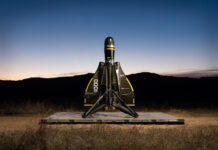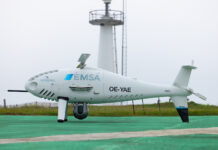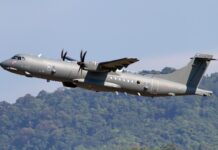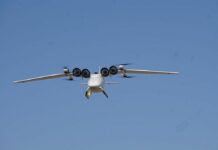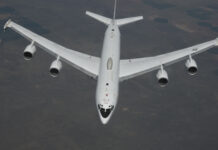Armed forces are currently evaluating mid- to long-term technology innovations with the goal of improving speed, reach and survivability of transport aircraft.
Farther. Faster. Better than they used to be. While reminiscent of a 1970s television series, these words describe current military planners’ aspirations regarding the next generation of transport aircraft. On the one hand, this reflects the desire to utilise emerging technologies and materials to enhance performance, simplify maintenance, and – if possible – reduce operating costs.
On the other hand, the developing geo-strategic environment and corresponding changes to concepts of operation will require military airlift to adapt in order to fulfil mission profiles. The practice of modifying civilian transport aircraft for military applications may no longer be viable in tomorrow’s threat environment. The development of longer-range air defence systems and air-to-air weapons will impose greater risk for transport aircraft operating in warzones; these aircraft will require ‘stealth’ level signature reduction as well as integrated defences to enhance survivability while supporting frontline forces. Longer-range enemy rocket and missile artillery will hold airbases in combat theatres at risk; as a result, the ability to operate transport aircraft from austere secondary airfields and even provisional landing sites will be increasingly valuable. Increased speed and range will also improve the ability to support forces operating across large theatres such as the Indo-Pacific region.
Given the recent trend toward distributed military operations rather than deployment of large, massed ground combat formations – especially when considering operations in the Indo-Pacific theatre – armed forces are also recognising the need for a more diverse fleet including both large and small transport aircraft. General Mike Minihan, Commander of the US Air Force’s (USAF’s) Air Mobility Command (AMC), clearly stated in July 2023 that his service’s Next Generation AirLift (NGAL) programme should lead to a family of systems. These would not only replace AMC’s very large airlifters (C-5, C-17) and mid-sized tactical transports (C-130), but also introduce smaller aircraft better suited to delivering smaller loads to dispersed units. General Kenneth Wilsbach, then Commander of the US’ Pacific Air Forces, echoed Minihan’s remarks, advocating for a larger number of (potentially unmanned) small transports capable of simultaneously taking a limited number of people or set of supplies to numerous locations. Minihan for his part also declared that unconventional technologies such as vertical take-off and landing (VTOL) or unmanned aircraft are being considered as possible solutions to future requirements.

Credit: Airbus
To achieve these goals, governments and industry are investigating lighter but stronger materials, more aerodynamic designs, alternate assembly processes, innovative operating concepts and alternate fuel options. Next-generation and ‘generation-after-next’ transport aircraft are expected to present ‘revolutionary’ rather than evolutionary designs and capabilities in order to deploy and survive in high-threat environments. That being said, many of the technologies envisioned are dual-use, creating an incentive for industry to invest in research that will also flow into more efficient and cost-effective future commercial aviation platforms.
Blended wing body design
Enhanced aerodynamics to reduce friction and drag will be a major goal for future transport aircraft designs. One promising approach is the blended wing body (BWB) design. As the designation implies, the fuselage and high-aspect-ratio wing of a BWB form a unit, presenting a broader and uninterrupted silhouette. A blended wing aircraft thus generates lift with the fuselage as well as the wings. This arrangement promises significant improvements in airspeed and range while reducing fuel consumption by an estimated 30–50%. A BWB’s extra lift allows for operations from much shorter runways than equivalently-sized conventionally-designed ‘tube and wing’ airframes. Moreover, the broader fuselage accommodates larger payloads than conventional aircraft of the same length.

Credit: JetZero
Various government and industry teams are jointly investigating this technology, including the Pentagon’s Defense Innovation Unit, the USAF, and NASA. To date, the blended wing concept has only been tested at small scale or in wind tunnels. In August 2023, the USAF selected California-based JetZero (in partnership with Northrop Grumman and Scaled Composites) to build a large blended wing body demonstrator aircraft suitable for the cargo or tanker role. The full-scale technology demonstrator will be the size of a large narrow-body commercial aircraft, but is forecast to be 50% more fuel efficient. The firm’s Z5 design which forms the basis for JetZero’s proposal is supposed to achieve a 9,260 km (5,000 NM) operating radius and carry 250 passengers, while weighing half as much as today’s equivalent capacity airliners. Flight testing is expected to take place in early 2027. While JetZero has voiced confidence that an operational variant could be ready as early as 2030, many aviation experts consider this too optimistic given the challenges of testing and validating an as yet unproven design.
Other firms researching the blended wing concept include Airbus, which has presented a concept for a BWB aircraft under its ‘ZEROe’ (Zero Emissions) series of hydrogen-powered concept aircraft. According to the company, the BWB aircraft would have a 3,704 km (2,000 NM) range and the capacity to carry under 200 passengers. While conceived primarily for the civilian market, this design could ultimately be adapted for military transport requirements. As aircraft concepts and propulsion technology are refined, the performance characteristics of an Airbus BWB can be expected to improve.
While not specifically considered a ‘stealth’ design, the more unitary form of a BWB aircraft achieves a notably reduced radar cross section (RCS), with concomitant benefits for survivability. Given the inherent stability of the form, some BWB designs require no tail. Engines can either be mounted atop the aircraft or be embedded into the body; the latter configuration further reduces the aircraft’s radar, thermal, and acoustic signatures.

Credit: Boeing
Boeing introduced its own concept for a BWB tactical transport aircraft in January 2023. The firm specifically designed its model as a stealth aircraft. Beyond the standard benefits of the BWB form, the Boeing model features numerous low-observability elements such as obscured engine inlets, chined edges, a relatively sharp, beak-like nose, and a splayed tail. The internally-mounted engines and top-facing, relatively flat exhaust nozzles further reduce the radar and heat signature. The firm emphasises that the design is still in an early concept stage, with considerable room for change; in early 2023, Boeing postulated that it could be developed into an operational transport within the next 10 to 15 years.
Ground effect aircraft
The US Defense Advanced Research Projects Agency (DARPA) is investigating several unconventional concepts under the Liberty Lifter programme and the Speed and Runway Independent Technologies (SPRINT) programme. Unlike the blended wing, these concepts do not rely on signature reduction, but utilise other approaches to minimise detection and targeting. Both concepts are fully independent of runway or landing strip infrastructure.
Liberty Lifter is a ground effect aircraft concept. The USAF awarded competing prototype design awards to Aurora Flight Sciences and General Atomics-Aeronautical Systems Inc (GA-ASI) in January 2023. Phase two of the programme is set to begin in mid-2024. It will downselect to a single vendor who will conduct advanced design work leading up to construction and flight of a full-scale demonstrator aircraft. DARPA states that the first flight of the demonstrator is planned for late 2027 or early 2028. The agency’s requirements include the ability to fly close to the sea surface over long distances using the ground effect (also known as the wing-in-ground effect), as well as conventional flight at altitudes up to 3,100 m. The aircraft must be able to take off and land on the ocean surface during Sea State 4 conditions, and perform sustained on-water operations in Sea State 5. Cargo capacity must meet or exceed that of the C-17.
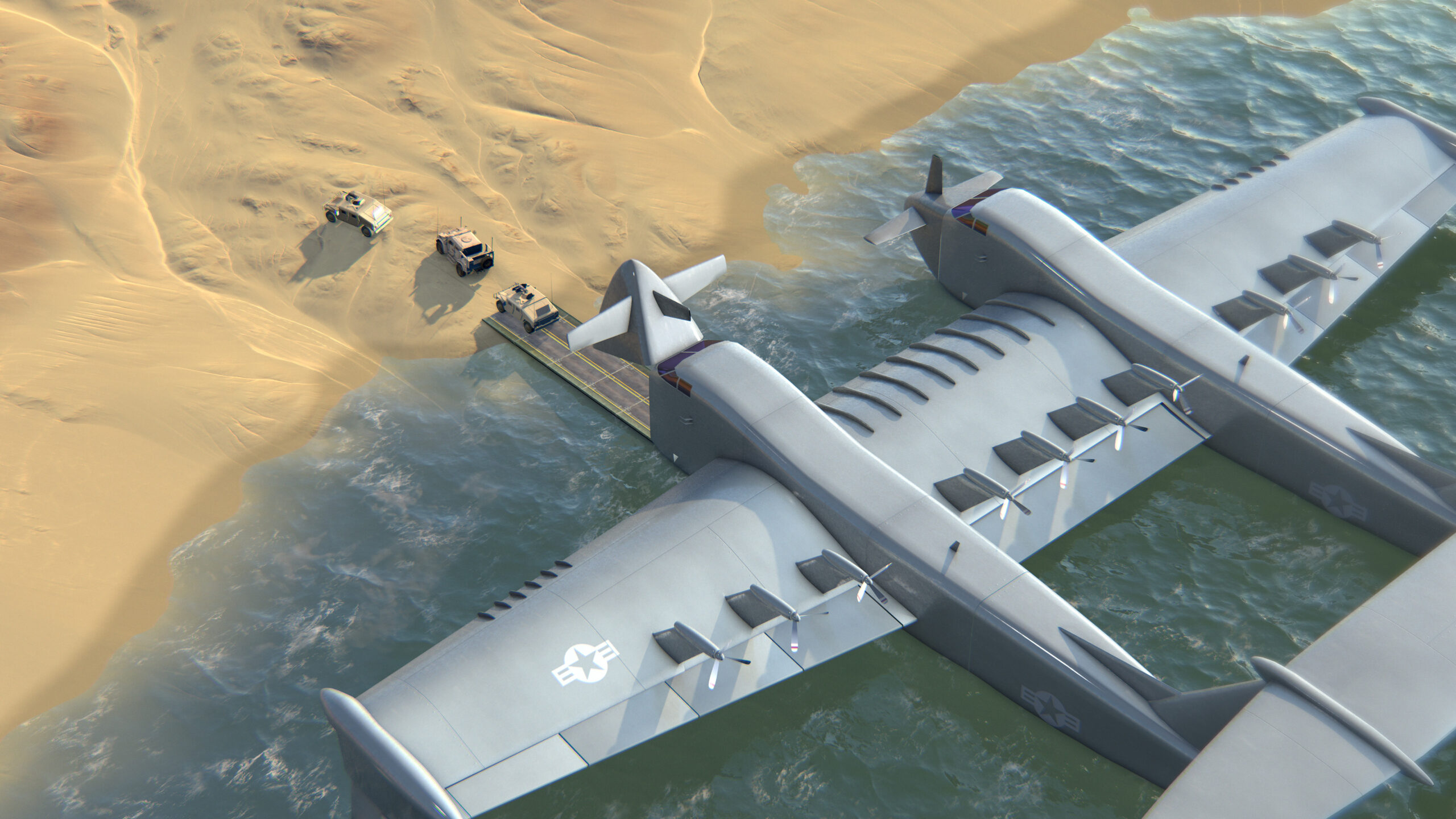
Credit: GA-ASI, via DARPA
The aircraft would be optimised for delivering personnel, large equipment, or significant amounts of supplies in littoral zones or along island chains, at speeds exceeding existing sea lift platforms. Given these characteristics, it appears strongly slanted to the requirements of the Indo-Pacific theatre. DARPA’s 1 February 2023 press release speaks of ultimately partnering with DoD and international partners to develop an operational aircraft. However, it remains unclear whether the concept will ever progress beyond the X-plane demonstrator stage, given cheaper options also under consideration, such as fitting removable pontoons to C-130 Hercules airlifters to enable surf-zone deliveries.
VTOL transport aircraft
VTOL systems are also under consideration in order to supply forward operating units which have no access even to ad-hoc runways such as roads or level fields. Such capabilities are of course already operational in the form of helicopters and tiltrotor aircraft such as the V-22 Osprey. Future VTOL aircraft must exceed current operational systems in terms of speed, range and survivability. In this context, General Minihan has specifically referenced DARPA’s SPRINT programme. The programme seeks to develop a jet-speed aircraft capable of cruising at 741-833 km/h (400–450 kn; which is 278-370 km/h (150–200 kn) faster than the V-22 Osprey), and transitioning to vertical mode when required to land at austere sites with no suitable runway.
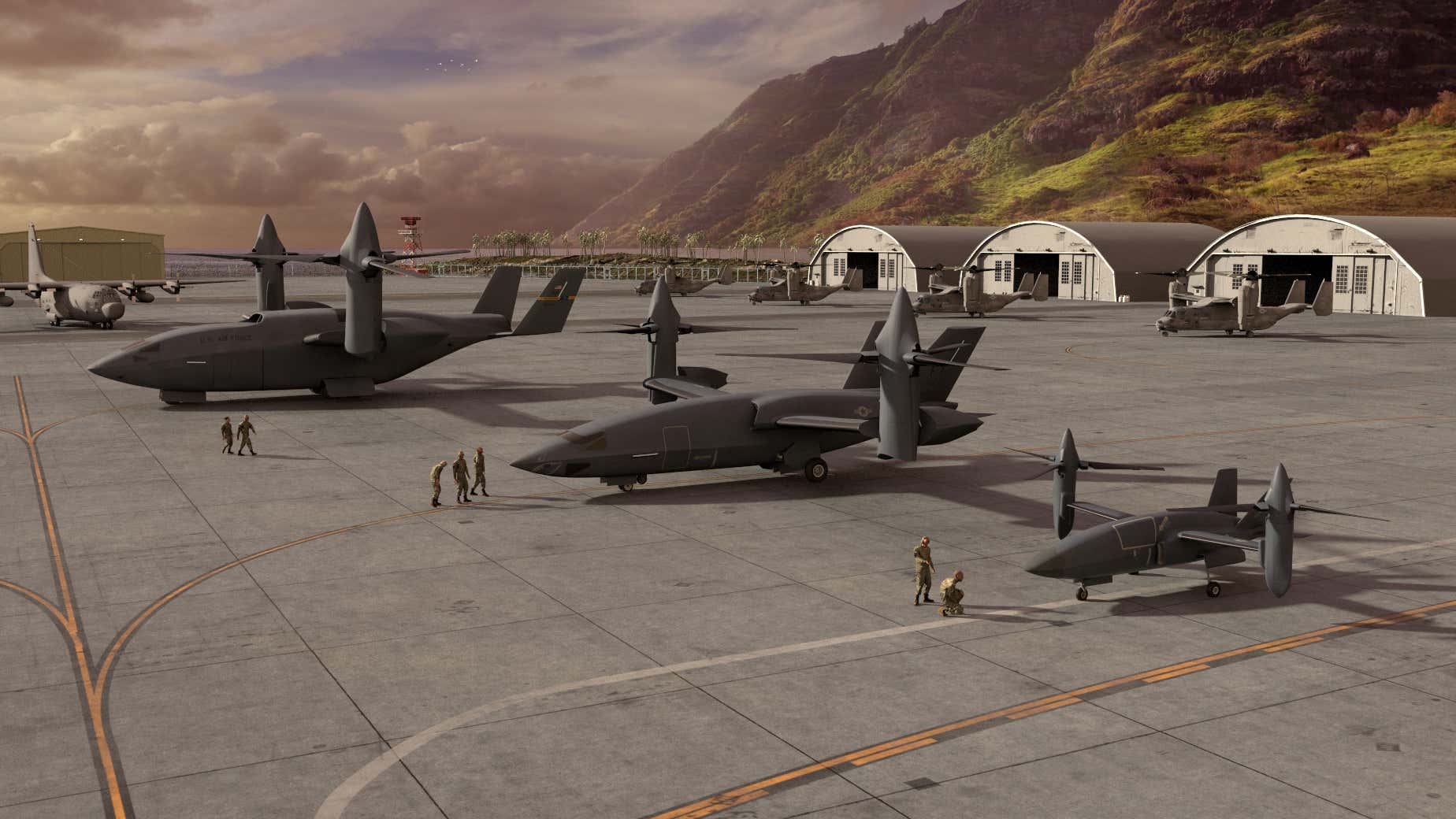
Credit: Bell Textron
According to the agency, the SPRINT X-plane is intended to be a proof-of-concept technology demonstrator, not necessarily the precursor to an actual development and acquisition programme. Instead, DARPA states that the flight test programme seeks to validate enabling technologies and integrated concepts that can be scaled to different sized military aircraft. Four firms – Aurora Flight Sciences, Bell Textron, Northrop Grumman and Piasecki Aircraft – were awarded initial concept design contracts. The agency is granting the firms great leeway regarding such factors as payload capacity or manned versus unmanned operations. Initial design reviews are due in May 2024, followed by elimination of one or more of the contenders. Another downselect is planned for late summer 2025, followed by flight tests of a demonstrator aircraft in early 2027.
In addition to DARPA’s SPRINT programme, other VTOL cargo programmes are being pursued, including civilian cargo drones currently entering service. San Francisco-based Elroy Air has already secured 500 orders for its Chaparral UAV, which can carry up to 136 kg over a distance of 500 km at a cruising speed of 232 km/h (125 kn), and land within a 5 m2 area. The hybrid-electric propulsion system consists of eight vertical lift fans and four electric propellers for horizontal flight with an onboard gas-turbine generator helping to recharge batteries in flight, thereby contributing to the aircraft’s endurance and range. The payload is carried in underslung pods which can be deposited or picked up autonomously.
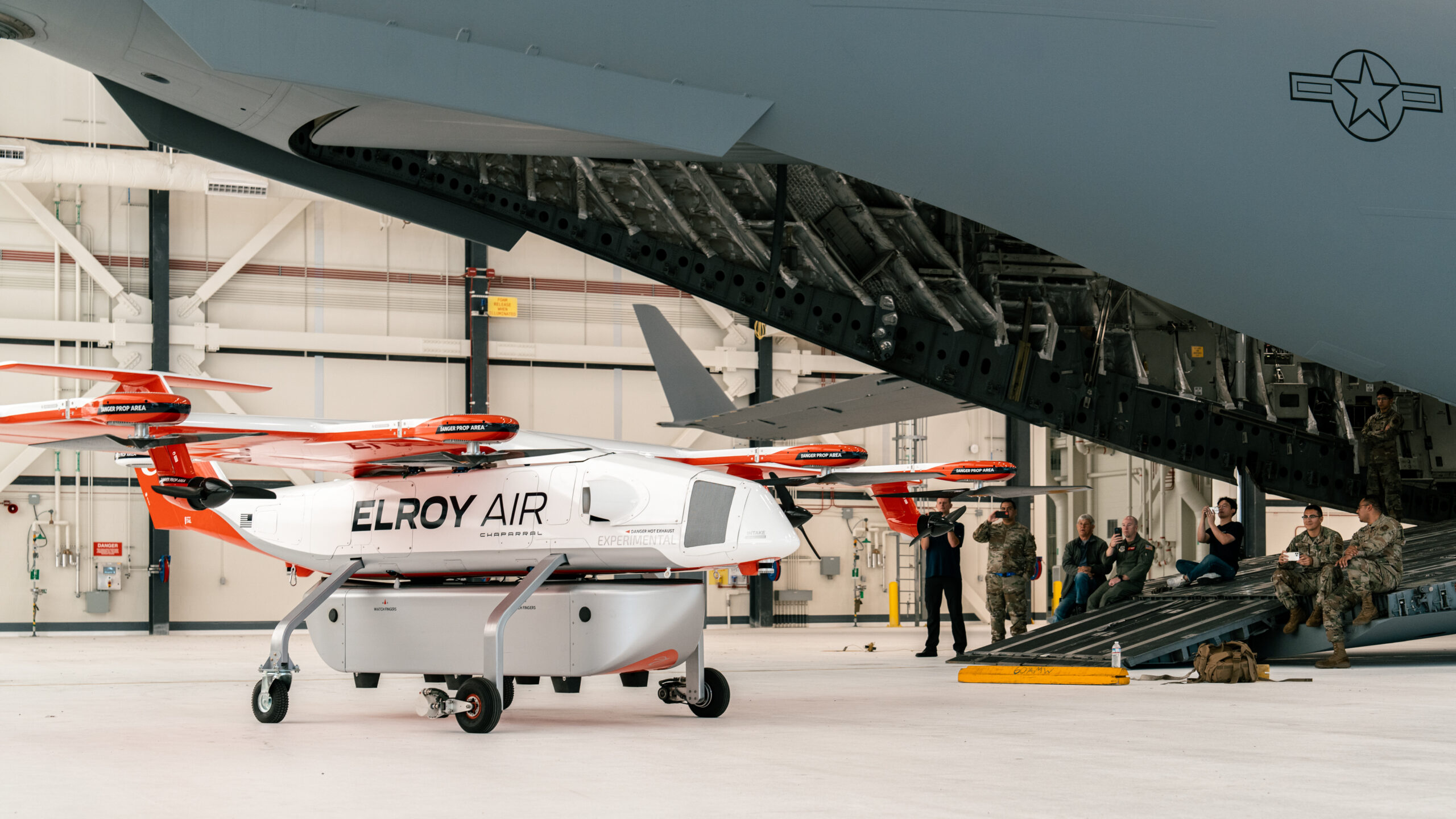
Credit: Elroy Air
While Chaparral is aimed primarily at the civilian airfreight market, Elroy has also received research and development funding from the USAF. An aircraft of this configuration would fill a gap between smaller UAVs and manned aircraft, making it suitable for resupply of dispersed platoon and company sized units. Chaparral can itself be transported into a theatre of operations by tactical cargo aircraft or in a 12 m container. The system is due to complete flight testing and begin deliveries during the course of 2024, with full-scale deliveries to commercial customers beginning in subsequent years. Being relatively low-cost and able to be procured in larger numbers than crewed equivalents, aircraft such as this would be suited for use in high-risk contested zones where losses are more likely to occur, and could provide an interim solution ahead of more sophisticated technology being introduced.
Bell announced in 2021 that it was pursuing a family of three High-Speed Vertical Take-Off and Landing (HSVTOL) aircraft ranging from a 1,800 kg unmanned vehicle to a 45,500 kg manned aircraft approaching the size and capacity of the C-130. Each unit would feature a dual-propulsion system consisting of tiltrotors for vertical flight, and jet power for horizontal flight. Cruising speeds of more than 741 km/h (400 kn) are expected. Signature reduction technology, as well as electronic and infrared countermeasures would enhance survivability. For transport missions, aircraft with such a capability profile would be best suited for relocating personnel and supplies into highly contested areas. Evaluation of component technologies has been conducted through early 2024 at Holloman Air Force Base, New Mexico.
Unmanned/optionally manned
Almost every category of aircraft is currently being tested for suitability as an unmanned platform; cargo planes are no exception. China’s Tengden Technology company announced the maiden flight of its Scorpion D cargo drone in October 2022. The dual-use capable aircraft has a 1.5 tonne or 5 m³ payload capacity, and appears suitable for short or austere landing sites. Western firms are pursuing similar capabilities across the spectrum from small to large aircraft.
London-based Droneliner has presented designs for two concepts, the DL200 and DL350, with 182 and 318 tonne payload capacities, respectively. With an anticipated unrefuelled range of 12,038 km (6,500 NM) and an aerial refuelling capability, the designs promise to enable next-day worldwide cargo delivery. Depending on the model, the fully-automated roll-on, roll-off airframes are planned to be capable of accommodating up to 40 (in the case of DL200) or up to 80 (in the case of DL350) lightweight versions of standard 6 m ISO shipping containers. Faster loading and unloading times as well as a favourable 4:1 payload-to-fuel ratio (enabled through use of fuel-efficient engines) promise to reduce airfreight costs by 70%, according to the firm.

Credit: Droneliner
While Droneliner is primarily aiming for the civilian airfreight market, the firm’s designs include options for remote-controlled airdrop capability. That capability aside, a wide-bodied unmanned airlifter could quickly ferry equipment and supplies from North America or Europe to safe logistic hubs in the theatre of operations, for transfer to tactical airlifters. This could reduce pressure on human aircrews, freeing up pilots and loadmasters for warzone supply missions – a potentially significant consideration given many nations’ current difficulties recruiting and retaining flight personnel. Developing fully autonomous transport aircraft will require progress in artificial intelligence. In the short to medium term, it is questionable whether the military would entrust a large cargo of vital wartime supplies to a fully robotic aircraft, while using unmanned aircraft as troop transports seems even more unlikely. As an alternative, increased automation could reduce the human workload in the cockpit, permitting a single pilot to fly the aircraft. The USAF is already considering just such an option for the KC-46 tanker aircraft.
Alternate/renewable energy propulsion systems
New propulsion options are another area receiving attention. While this is largely an industry focus targeting the civilian carrier market, armed forces are also interested in the potential for greater fuel efficiency and reduced reliance on imported oil, as well as lower emissions. Research and development generally falls into one of two categories: alternate fuels (also known as sustainable fuels) and electric power.
Hydrogen currently appears to be the most promising option for replacing hydrocarbon fuels. There are three different concepts for hydrogen propulsion. The first, hydrogen combustion, simply replaces hydrocarbon-based fuels with liquified hydrogen; this requires modification of fuel injectors, but overall the propulsion process remains virtually unchanged. The second method uses hydrogen fuel cells to power electric motors; this electric propulsion system would constitute a radical change from current systems. The third option combines hydrogen-burning gas turbine engines with hydrogen fuel cells to form a hybrid propulsion system.
Numerous firms are researching these technologies, mostly on smaller airframes. Airbus has emerged as a global leader in applying the technology to larger aircraft with the firm working simultaneously on three hydrogen-fuelled aircraft concepts under the canopy of the ZEROe programme. This includes the aforementioned BWB concept, two conventional airframes (one turbofan and one turboprop) utilising hybrid hydrogen-electric systems, as well as one electric prop concept powered by hydrogen fuel cells. The firm hopes to market the world’s first fully hydrogen-powered commercial carrier by 2035. As an intermediate step, Airbus plans a 2026 demonstration flight of an A380 passenger jet converted to hybrid propulsion combining hydrogen-burning turbines and hydrogen fuel cells.
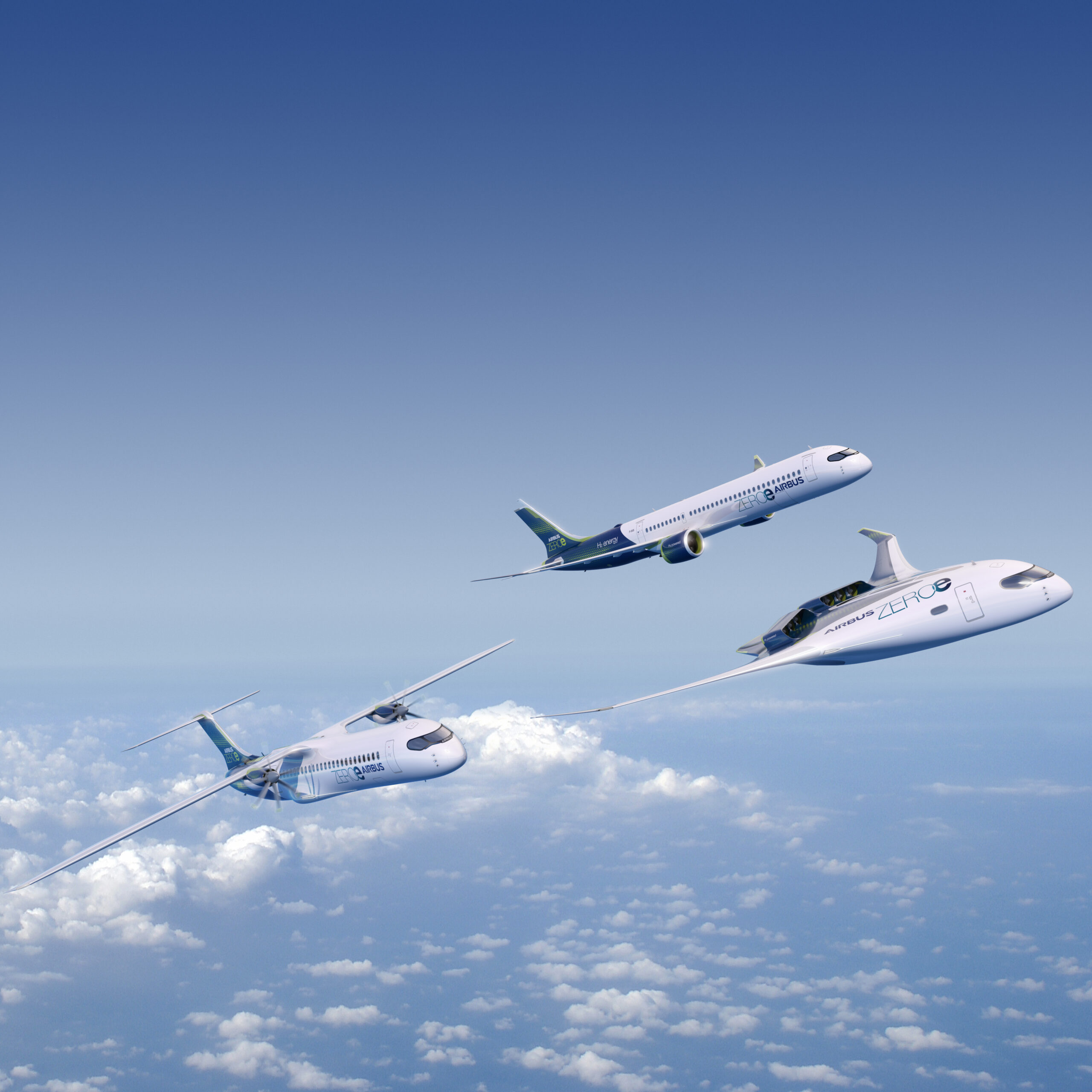
Credit: Airbus
However, challenges remain. Notably, Airbus’ expectations regarding passenger capacity and range of their first generation ZEROe concepts are significantly lower than comparable hydrocarbon-powered Airbus transports. By weight, liquified hydrogen has a significantly higher energy value than hydrocarbon fuels, but this advantage is more than neutralised by the fact that hydrogen is significantly less dense. As a result, it requires more storage space aboard an aircraft. It also requires specialised (and often heavy) storage containers. Adding fuel cells to the configuration imposes an additional weight penalty. With time, solutions will likely be found for these challenges. However, industry analysts postulate that even if hydrogen-powered aircraft begin to enter service circa 2035, it will be closer to 2050 before they become fully established. It seems unlikely that military airlift will be a trailblazer for alternative fuels, so revolutionary propulsion systems will likely appear with the ‘generation after next’ military transports.
Suborbital transport
The most revolutionary concept of all is cargo insertion via suborbital flight. In principle, the concept falls outside the topic of transport aircraft, as it envisions the use of rocket-borne cargo capsules, but merits discussion here given the serious consideration it is receiving. To qualify as suborbital, the carrier would have to reach the Kármán line 100 km above the Earth’s surface, then re-enter the atmosphere and land.
While suggestive of science fiction, suborbital transport has been actively studied and pursued by the USAF for years. “I don’t think anything is off the table, in terms of creative thinking for space,” said the then Assistant Secretary of the Air Force for acquisition, technology, and logistics, Will Roper, in November 2020. “When you can launch an austere airbase in a space capsule, that’s frickin’ awesome! Just to be able to just have it come down, halfway around the world, with everything you need to be able to maintain and operate a small fleet of airplanes — refuel it, rearm it and get it back in the fight”, Roper told reporters during a Pentagon briefing. His words echoed a statement by the then commander of the US Transportation Command, General Stephen Lyons, one month earlier: “Think about moving 80 short tons, the equivalent of a C-17 payload, anywhere on the globe in less than an hour. We should challenge ourselves to think differently about how we will project the force in the future, and how rocket cargo could be part of that.” In 2021, the USAF elevated the Rocket Cargo programme to a high-priority project.

Credit: SpaceX
In pursuit of this objective, the USAF Research Laboratory (AFRL) has signed cooperative research and development agreements (CRADA) with five firms to study the potential for suborbital ‘point-to-point’ delivery. The Starship launch vehicle under development by SpaceX is receiving especially close attention. The Starship’s upper stage is powered by six engines, three of which can be used for performing a controlled ‘soft’ landing, once the stage has performed a ‘belly-flop’ manoeuvre to align itself for landing after the initial phase of re-entry. Alternately, payloads can be jettisoned in flight. According to SpaceX, the reconfigurable cargo section has a capacity of 100–150 tonnes. The ongoing study initiated in 2022 plans to analyse data collected during commercial launches and landings of SpaceX’s Starship rocket, evaluate the compatibility of the spacecraft’s cargo bay with US military container systems, and culminate in a demonstration of the launch and landing of a cargo-loaded Starship system. According to Greg Spanjers, AFRL chief scientist for the Rocket Cargo programme, this flight testing could occur as early as 2026.
However, a successful test would not signal that the concept is nearing operational maturity. Many challenges remain, including development of standardised cargo containers which would protect equipment and supplies during launch and re-entry, while remaining compatible with conventional military ground and air vehicles for further transport. Another cost-intensive complication is the need for multiple dedicated spaceports, located in the US and overseas, for launching the rockets. Recovery of the reusable upper stage from far-flung and isolated landing sites also seems questionable, especially under wartime conditions. Many experts agree that realising the concept remains a matter of decades. Ultimately this could be a good thing, given the risk that adversaries might mistake a supply mission for a nuclear attack and launch a counterstrike.
Most likely to succeed
The most important considerations for next-generation and generation-after-next transport aircraft will be: agility; survivability; the ability to supply dispersed operating locations with minimal reliance on infrastructure; and relatively low operating costs. Lightweight, but strong composite materials are now available or being developed which will permit construction of new, more aerodynamic and reduced-RCS airframe types, such as the BWB. In addition to signature reduction, these materials will also contribute to reduction of airframe weight, thereby enhancing fuel efficiency as well as range and potentially speed.
Open architecture will permit maximum adaptability of aircraft to meet new operating environment conditions or accept additional responsibilities on top of their primary mission. In February 2024, General Minihan doubled down with more details about the USAF’s aspirations regarding future mobility platforms, whether tankers or airlifters. Mentioned options include acting as communications nodes or adding a command and control/battle management capability. “We’ve got an enormous amount of real estate on these airplanes to do connectivity and serve a greater cause […] without bankrupting the Air Force” he said during the Air & Space Forces Association Warfare Symposium in Colorado. What holds for the United States will surely hold for other nations’ military air fleets as well. Survivability enhancement, at least for airlifters operating in contested environments, will likely also include defensive (and potentially offensive) electronic warfare suites as well as the capability to control armed unmanned escort aircraft. Adding electronic support measures would permit airlifters to gather electronic intelligence during their routine transport missions.
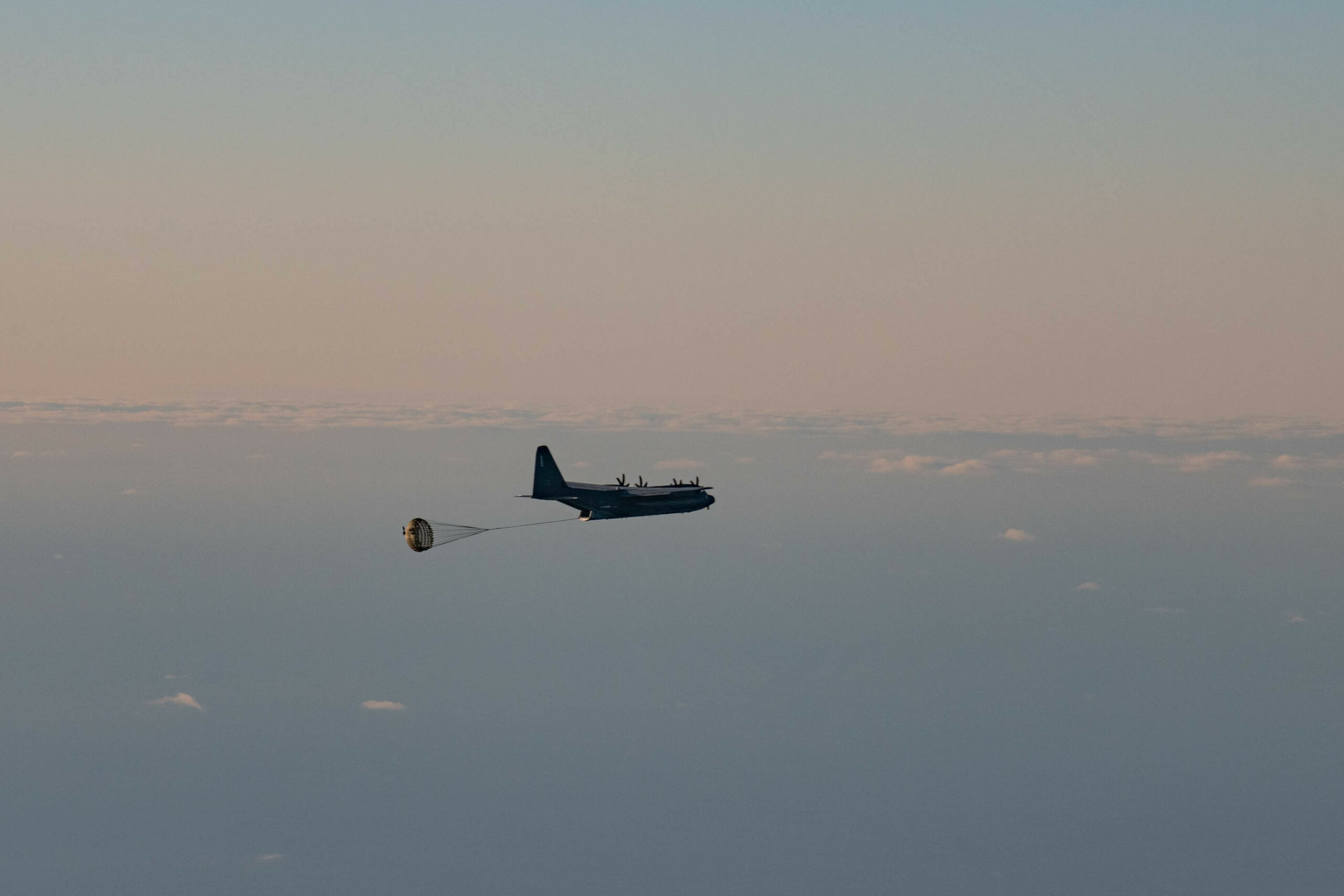
Credit: US ANG/Tech Sgt Brigette Waltermire
Cargo and cargo-capable tankers will also be used as auxiliary weapons carriers. The USAF began testing the Rapid Dragon concept – launching palletised cruise missiles from C-130 and C-17 aircraft – in 2021. US Allies quickly expressed interest, leading to a demonstration of the concept during a NATO exercise in 2022. In February 2024, General Minihan announced plans to test launch 100 UAVs from an air-mobility aircraft in July or August of 2024. Again, these concepts are viable for any nation with medium to large cargo aircraft, enabling forces without a bomber fleet to launch significant numbers of long-range weapons or smart munitions.
The more sophisticated the technology, the more expensive the aircraft will be. The most likely outcome for future airlift fleets will be a tiered set of aircraft forming a transport relay chain. Some will be equipped with very advanced survivability measures, up to and including low-observable coating and VTOL capabilities, suitable for frontline missions in highly contested environments. They may be deployed in tandem with manned or unmanned escorts, and may potentially be unmanned themselves. For in-theatre operations less close to the front lines, larger manned aircraft equipped with defensive electronic countermeasures and potentially kinetic or directed energy weapons will ferry supplies and soldiers to hub bases. Blended wing designs and other technologies will permit these aircraft to operate from short or austere landing fields. For the most permissive environments, large-capacity and fuel-efficient transport planes will continue to ferry equipment and personnel into theatre, utilising full-fledged military and civilian airfields.
Sidney E. Dean




